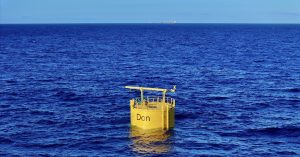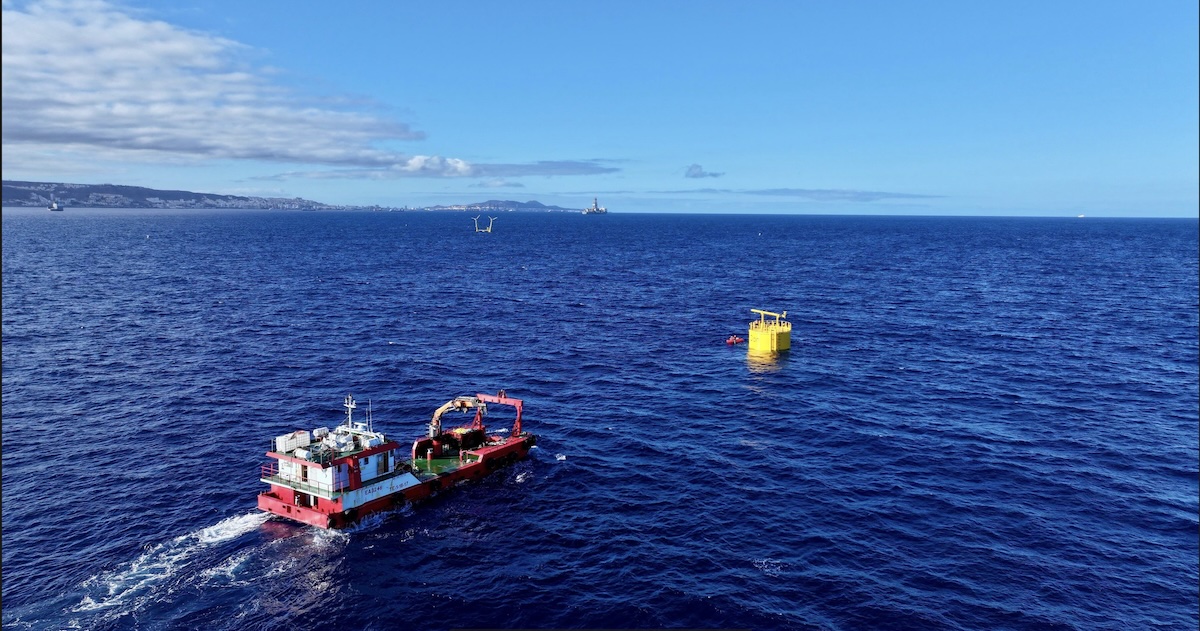A new storm-resistant ocean energy structure has been installed off the coast of Gran Canaria, marking a breakthrough in developing renewable systems capable of operating through hurricanes. Developed under the EU’s Horizon Europe–funded PLOTEC project, the prototype represents the next step in harnessing Ocean Thermal Energy Conversion (OTEC) to deliver round-the-clock clean power to island nations most exposed to climate risks.
 “This is more than just a test of the core technology, which has already been proven to work — it’s a demonstration of resilience,” said Dan Grech, Founder & CEO of Global OTEC. “If we can demonstrate that OTEC platforms can operate safely and continuously through extreme weather, we open a new chapter for clean baseload power in regions that need it most.”
“This is more than just a test of the core technology, which has already been proven to work — it’s a demonstration of resilience,” said Dan Grech, Founder & CEO of Global OTEC. “If we can demonstrate that OTEC platforms can operate safely and continuously through extreme weather, we open a new chapter for clean baseload power in regions that need it most.”
The installation comes just weeks before COP30 and the Earthshot Prize 2025, where climate resilience and energy security for vulnerable regions are expected to top the agenda. It marks the first long-term offshore operation of an OTEC platform in decades, following early temporary demonstrations such as the historic Mini-OTEC and OTEC-1 projects, deployed in the late 1970s and early 1980s off Keahole Point, Hawaii, USA, which used a U.S. Navy barge and a converted World War II T2 tanker, respectively.
This phase involved deploying the platform’s cylindrical hull at the Oceanic Platform of the Canary Islands (PLOCAN) test site. The next phase will see the installation and connection of the cold-water pipe, completing the system ahead of full structural testing in the Atlantic environment.
During this structural testing stage, the platform will face the rough conditions of the Atlantic Ocean, allowing detailed analysis of its resistance, materials, and design. Advanced sensors from Fugro will record gyroscopic and accelerometer data to monitor the vessel’s motion and, later, the cold-water pipe’s stability, correlating these with local wave data. Previous computer simulations and a scaled tank test conducted in the UK have already verified the structure’s design at laboratory scale.
“The data collected during the tests will validate our computational models and show how accurately we can simulate the interaction between the large-diameter riser and the vessel under a range of conditions,” explains Sam Johnston, Lead Engineer at Global OTEC. It will be combined with performance data from grid-connected OTEC power plants to de-risk future projects.
The PLOTEC project aims to accelerate the renewable energy transition for tropical island states such as Barbados, which face extreme weather and remain heavily reliant on diesel generation. OTEC offers a uniquely suited solution, using the ocean — their most abundant resource — to provide stable, 24/7 clean power. This prototype, engineered to withstand tropical storms, demonstrates how OTEC could deliver resilient and reliable energy to storm-prone regions.
Beyond advancing OTEC’s role in clean energy generation, the project contributes to marine engineering, computational modelling, and the development of weather-resistant materials for offshore use. The structure is named “Don” in honour of Don Lennard, a British aircraft engineer and Royal Navy veteran who dedicated his life to advancing OTEC technology.
Testing will continue over the coming months, with performance data expected in early 2026. If successful, the results will guide the design of full-scale OTEC systems capable of powering entire island grids and offshore facilities.




